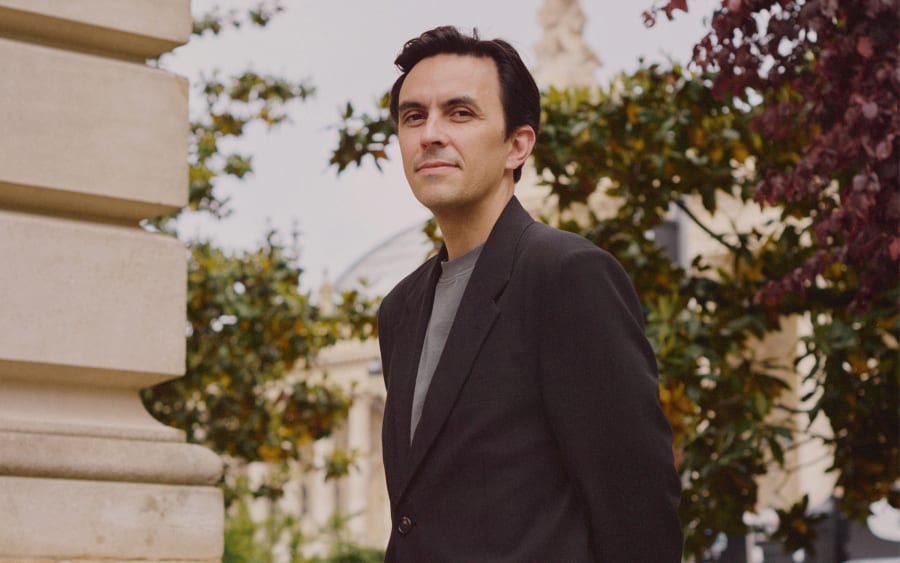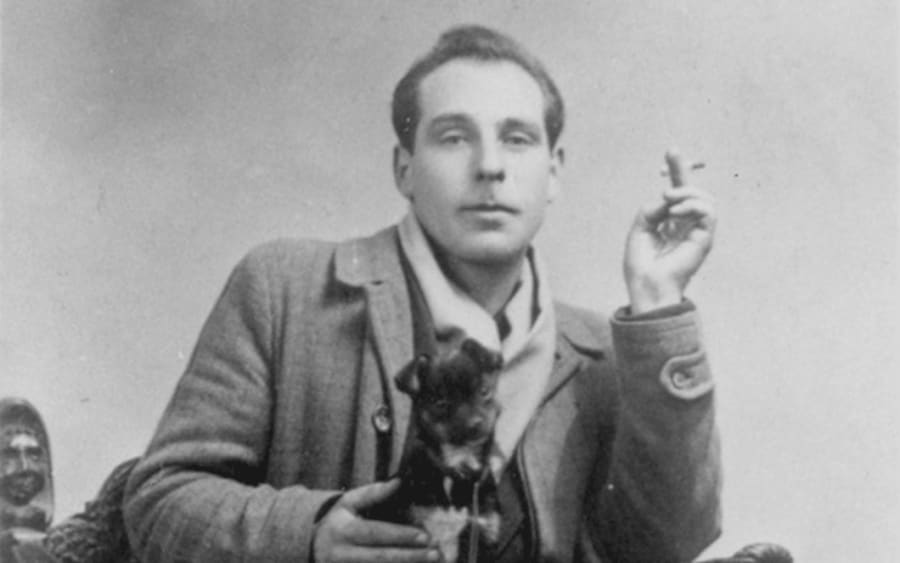Not yet 30, Jessy Razafimandimby, is already a rising star in contemporary art, with a talent for seamlessly blending intensity with eclecticism. He describes his entry into art as having happened almost ‘by accident.’ ‘I grew up in Madagascar, immersed in the philosophies of the Malagasy people, and art was not part of my family’s daily life.’ At the age of 14, he moved to Geneva, Switzerland. ‘When I landed in Europe I connected with art; at the very beginning, I wanted to make music, and the visual arts were not on my radar.’ But a teacher convinced him that he could make a go of it. When he started at HEAD, Geneva’s prestigious art school, he first tried his hand at sculpture and installation before ‘getting on board the painting boat.’
His teachers, in particular Caroline Bachmann and Vidya Gastaldon, encouraged him to deepen his knowledge of pictorial culture. ‘For three years, I learned a lot from them – our discussions in the studio stimulated me enormously.’ And then the final breakthrough came during his third year. On the diploma jury was Renée Levi, an icon of Swiss abstraction. ‘Her approach to painting intrigued me, and it helped me to answer the question: What is possible in painting today?’
Although Razafimandimby now works in performance, installation, and sculpture, he aligns himself most readily with painting, ‘this precious medium, said to be dead.’ He describes his style as ‘figurative, but I’m looking more and more towards abstraction. My painting can never be neatly categorized; I try to make it explode out of the frame.’ For him, painting remains ‘the starting point for all research. In the studio, I spread out several canvases and work on them simultaneously; they serve as the base for my thoughts, and little by little I scatter things around.’ And what about the elements that spill over and refuse to fit within the frame? ‘I transform these remnants into textual matter or objects. One of the essential questions that runs through my work is: What disappears? I think a lot about the ephemeral.’
This is how his performances came about. ‘I started working on them in my third year at art school because, and while I didn’t fully understand the medium, it intrigued me. I wanted to intensify the connection with the body that I was already exploring in painting, making it more physical, brutal, and direct, and engage in a more direct relationship with the audience. My performances strip away the things I had kept for myself in the studio.’
Invitations soon followed. Last May, he was invited to the Musée d’art et d’histoire de Genève, where he transformed the historic dark wood rooms. Collaborating with friends and his partner, Emma Bruschi, who designed the costumes, he worked the body and soul of each room adopting ‘an approach which shifted between the contemplative, conceptual, and expressive; a sort of macabre dance and improvisation with instruments made from found objects.’
He never repeats his performances. Nor does he document them. ‘It’s a way of avoiding categorization.’ And also to preserve their distinctiveness, rooted in his childhood memories. What he seeks above all is to keep that ‘child’s eye. A new, fresh way of looking, a desire to shake things up and put things back on their feet that were condemned to disappear. Malagasy culture is marked by ceremonies and spirituality, a lot of mysticism.’ His painting is also rich in this intense relationship with the earth, ‘red, sacred earth, from which life emerges and where it is immolated. It’s innate in me, I’ve carried it with me since childhood, it nourishes me.’
With three projects in the pipeline, fall promises to be busy. The first will take him back to Antananarivo. Invited to hold a solo exhibition in September at Hakanto Contemporary, an art center under the artistic direction of visual artist Joël Andrianomearisoa, Razafimandimby recently returned home after a 15-year absence: ‘A shock! Five days of unlikely discoveries, as if the city was waiting for me and didn’t want to reinvent itself.’ His Parisian gallery, sans titre, will present an installation at Art Basel Paris inspired by the one exhibited this past spring at the Dortmunder Kunstverein in Germany. At the same time, he will stage a solo show in the gallery’s Marais premises, again on a very intimate subject: ‘A few months ago, my partner and I received some incredible news: we’re expecting a baby in October!’
Razafimandimby’s practice was immediately turned upside down by this development. His relationship with the body of the other was sharpened by the silhouette of his pregnant wife, which inspired a series of paintings. ‘My painting moves towards this observation of her body, this life growing before my eyes – yet another thing I don’t understand. And a canon of beauty that has long been undervalued. Once this kind of image gets hold of me, I must flatten it, complete it, and take it elsewhere.’
A new exile accompanies this upheaval: The artist has recently settled in Marseille and loves it already. ‘It’s perfectly situated between Geneva and Antananarivo. I want to hold on to my Swiss side – pragmatic and rational – but I’m also very adaptable, so in two months, I’ll probably have an accent!’
Art Basel Paris will take place from October 18 until October 20, 2024. Learn more here.
Jessy Razafimandimby is represented by sans titre (Paris). His solo show ‘LE CORPS DES VOLANTS À SIX ÉTAGES’ will open at Hakanto Contemporary, Antananarivo, Madagascar, from September, 14, 2024.
Emmanuelle Lequeux is a writer based in Paris.
Jessy Razafimandimby is represented by sans titre (Paris).
Jessy Razafimandimby’s solo show titled ‘LE CORPS DES VOLANTS À SIX ÉTAGES’ is on view at Hakanto Contemporary, Antananarivo, Madagascar, from September, 14, 2024.
English translation: Art Basel.
Caption for header image: Jessy Razaimandimby, performance view, Un signe de pluie dans le cœur, 2024, MAH – Museum of Art & History, Geneva, curated by Anissa Touati. Photograph by Irina Popa.
Published on September 12, 2024.


